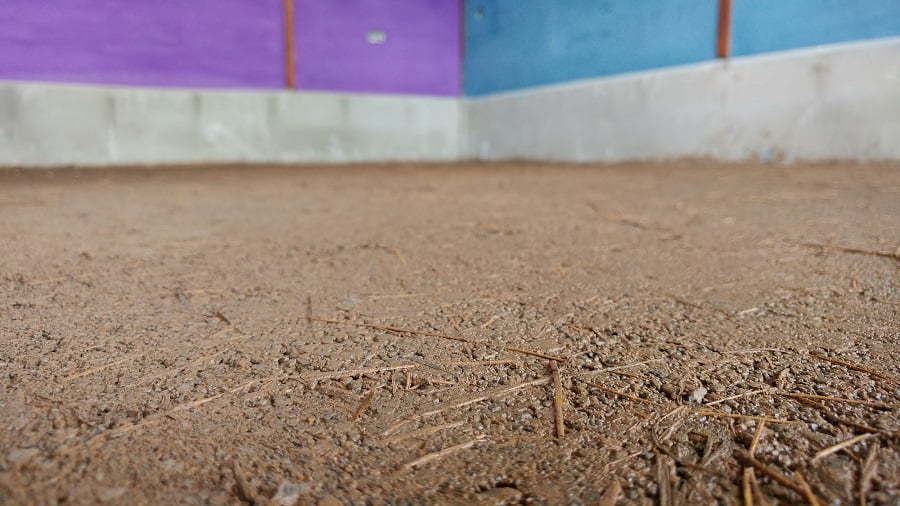Last updated on
Revamp your food storage game with these budget-friendly and creative alternatives. Read on!
The organization is key to creating a beautiful and functional space. And one area that often gets overlooked in the quest for orderliness is food storage.
We all know the importance of keeping our food fresh and safe, but traditional plastic containers can be bulky, unattractive, and expensive. That’s why I’ve put together this list of 20 alternative food storage container ideas that won’t break the bank or cramp your style.
From mason jars to silicone bags, each option has its own unique advantages and disadvantages that I’ll explore in detail. So whether you’re trying to save space in your fridge or looking for a more eco-friendly solution, there’s something here for everyone.
Let’s dive in!
Glass Jars

Glass jars are a classic and versatile option for food storage. They come in various sizes, shapes, and designs that can fit any kitchen style.
Glass is non-toxic, odorless, and doesn’t absorb flavors or stains from the food stored inside it. It’s also easy to clean and reusable.
One of the advantages of using glass jars is their transparency which allows you to see what’s inside without opening them. This feature makes it easier to organize your pantry or fridge while reducing waste by avoiding buying duplicates.
However, glass jars have some disadvantages too; they’re fragile compared to other materials like plastic or metal which means they can break easily if dropped accidentally. Also, they’re heavier than plastic containers making them less portable for outdoor activities like picnics.
Overall though if you want an eco-friendly option that looks great on display then glass jars are definitely worth considering as a food storage container alternative!
Silicone Bags
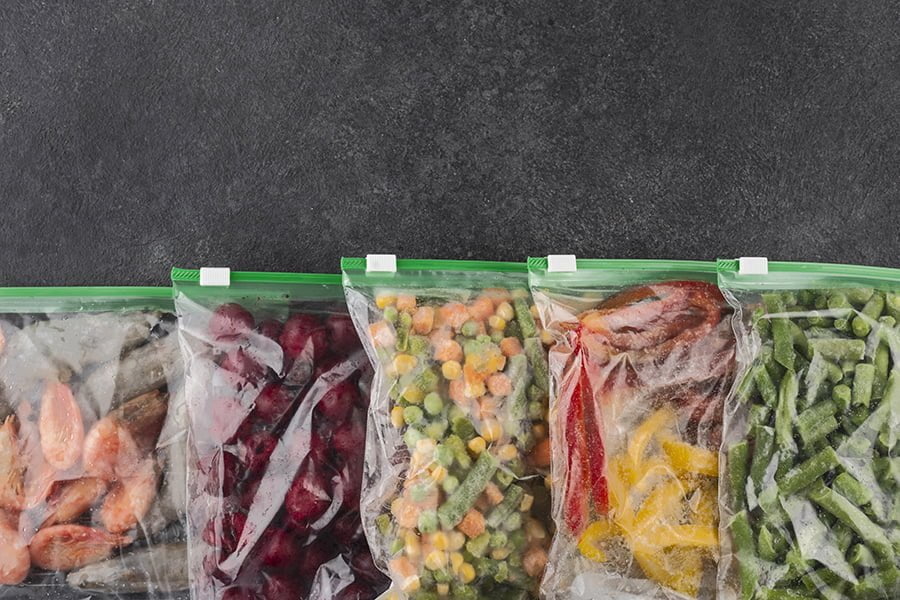
Silicone bags are a great alternative to traditional plastic food storage containers. They come in various sizes and shapes, making them perfect for storing different types of foods such as fruits, vegetables, snacks, and even liquids.
One of the advantages of silicone bags is that they are reusable and can be washed easily with soap and water or put in the dishwasher. They do not contain harmful chemicals like BPA or phthalates commonly found in plastic containers.
However, one disadvantage is that silicone bags may not be suitable for long-term storage as they may retain odors from previous use if not cleaned properly. Also, some users have reported difficulty sealing them tightly which could lead to leaks during transportation.
Beeswax Wraps
Beeswax wraps are a natural and eco-friendly alternative to plastic wrap. They are made from cotton fabric coated with beeswax, jojoba oil, and tree resin.
Beeswax wraps can be used to cover bowls, wrap sandwiches or snacks, or even as a lid for jars.
Advantages of using beeswax wraps include their reusability (they can last up to a year), their ability to mold around any shape due to the warmth of your hands when you use them, and they’re biodegradable at the end of their life cycle.
However, there are some disadvantages too. Beeswax wraps cannot be used for raw meat or hot food items as they cannot withstand high temperatures.
Also if not cared properly by washing in cold water only without soap then it may lose its stickiness over time.
Cloth Bags
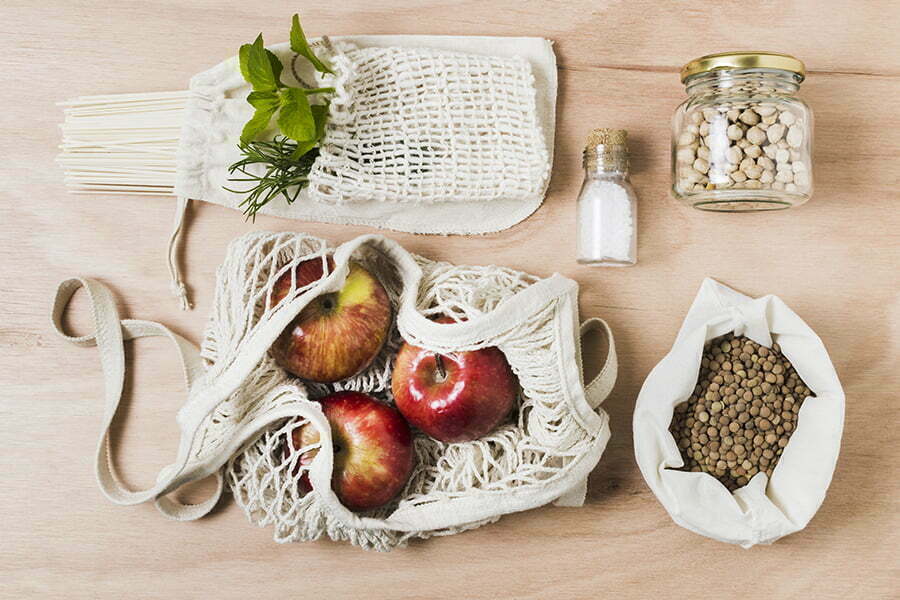
Cloth bags are a great alternative to traditional food storage containers. They come in various sizes and can be used for storing dry goods such as grains, beans, and nuts.
One of the advantages of using cloth bags is that they are reusable and eco-friendly. You can wash them easily when needed, which makes them a sustainable option for those who want to reduce their carbon footprint.
However, one disadvantage of using cloth bags is that they may not be suitable for storing wet or moist foods since they do not provide an airtight seal like plastic containers do. If you’re planning on storing items with strong odors such as garlic or onions in these bags then it’s important to note that the smell may linger even after washing.
Stainless Steel Containers

Stainless steel containers come in various sizes and shapes, making them versatile for storing different types of food items.
One of the main advantages of stainless steel containers is that they are durable and long-lasting, which means you won’t have to replace them frequently like plastic ones.
Another advantage is that they do not contain harmful chemicals such as BPA or phthalates, which can leach into your food when stored in plastic containers. Stainless steel also does not retain odors or flavors from previous meals like some plastics do.
However, one disadvantage of stainless steel containers is that they can be more expensive than their plastic counterparts. While most models are dishwasher safe, some may require hand washing due to their design or coating.
Reusable Plastic Containers
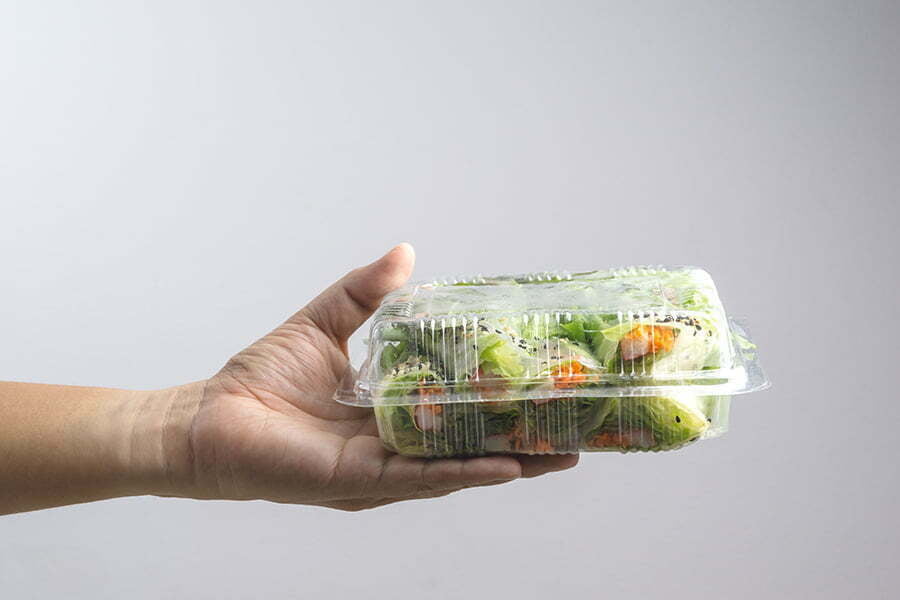
When it comes to food storage, reusable plastic containers are a popular choice for many households. These containers come in various shapes and sizes, making them versatile for storing different types of food items.
They are also lightweight and easy to clean.
One advantage of using reusable plastic containers is that they are affordable compared to other options like glass or stainless steel. They can be easily replaced if lost or damaged without breaking the bank.
However, there are some disadvantages to consider when using these types of containers. Over time, repeated use can cause wear and tear on the plastic material which may lead to cracks or leaks in the container’s seal.
This could potentially compromise your stored food’s freshness and safety.
Another concern with reusable plastic containers is their potential impact on the environment as they contribute significantly towards waste production if not disposed of properly after use.
Bamboo Boxes
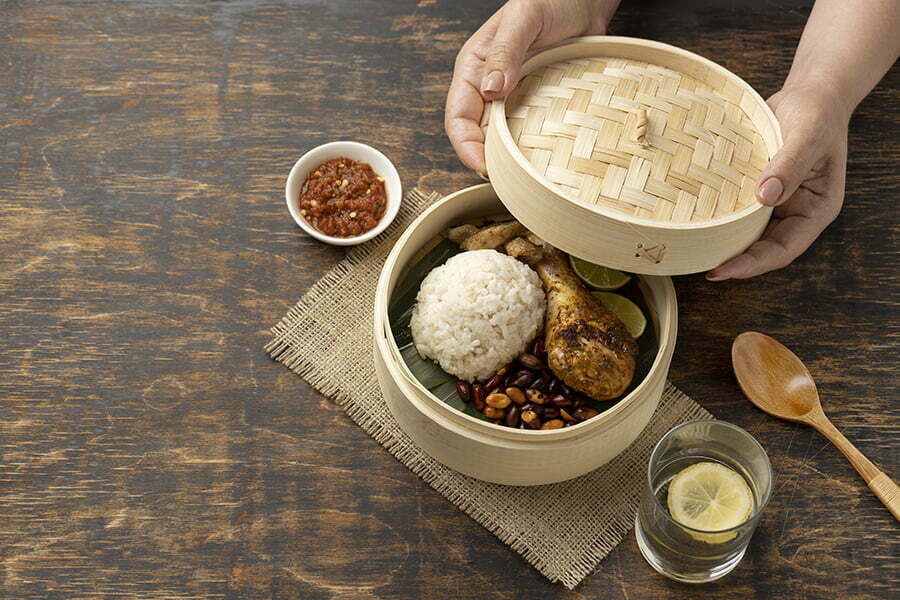
Bamboo boxes are eco-friendly, sustainable and biodegradable.
Bamboo is also naturally antibacterial which makes it an ideal material for storing food items.
Advantages of bamboo boxes include their durability and resistance to scratches, stains, and odors. They can be easily cleaned with soap and water or in the dishwasher without any damage.
However, one disadvantage of bamboo boxes is that they may not be completely airtight which could lead to some moisture buildup inside the container over time. They may not be suitable for use in the microwave or freezer as extreme temperatures can cause them to crack or warp.
Ceramic Bowls With Lids
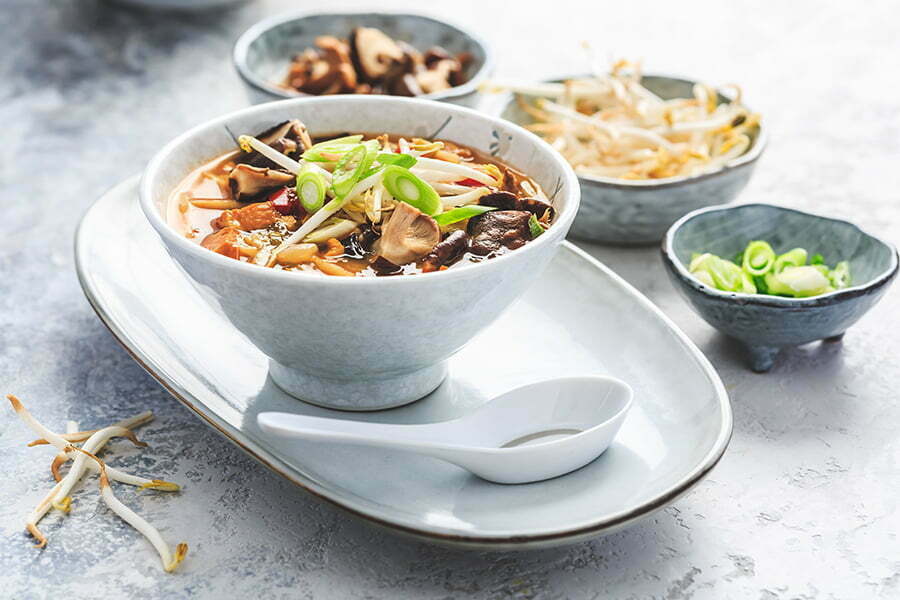
Ceramic bowls with lids are a classic and elegant option for food storage. They come in various sizes, shapes, and designs that can complement any kitchen decor.
Ceramic is a durable material that can withstand high temperatures, making it ideal for storing hot or cold foods.
Advantages of ceramic bowls with lids include their aesthetic appeal and the fact that they are microwave-safe. Ceramic does not absorb odors or flavors from the stored food like plastic containers do.
However, there are also some disadvantages to consider when using ceramic bowls as food storage containers. Firstly, they tend to be heavier than other materials such as plastic or glass which may make them difficult to handle especially if you have limited space in your kitchen cabinets.
Secondly, ceramics can break easily if dropped accidentally which makes them less suitable for households with young children.
Paper Bags
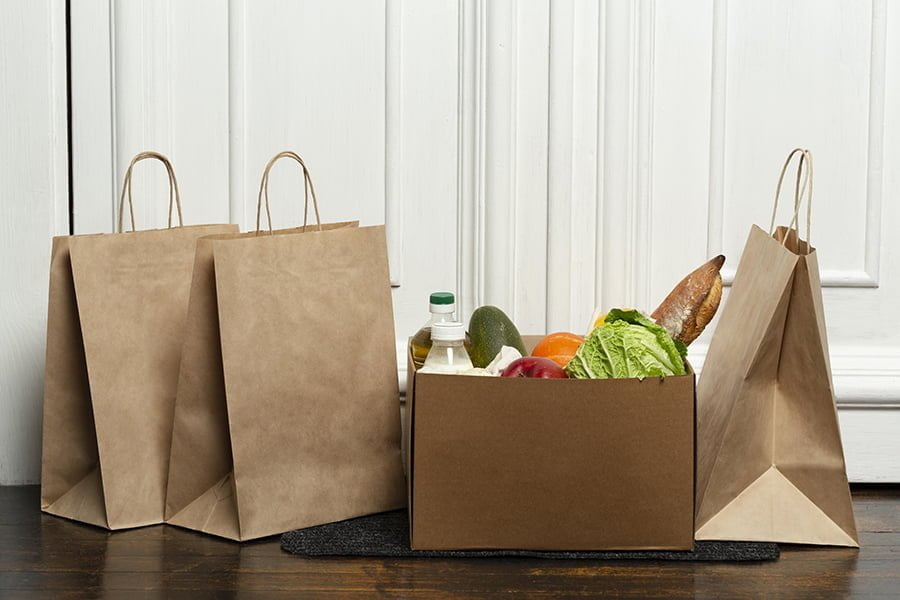
One advantage of using paper bags is that they are inexpensive and readily available at most grocery stores. They also take up less space than traditional plastic containers and can easily be folded or crumpled to fit into tight spaces in the fridge or pantry.
On the other hand, one disadvantage of using paper bags is that they may not provide as much protection for delicate items like fruits or vegetables compared to sturdier containers. If the bag gets wet from condensation or spills, it could tear and potentially ruin your food.
While not suitable for all types of foods and situations (such as long-term storage), paper bags can be a useful alternative when you need something quick and easy on a budget.
Mason Jars
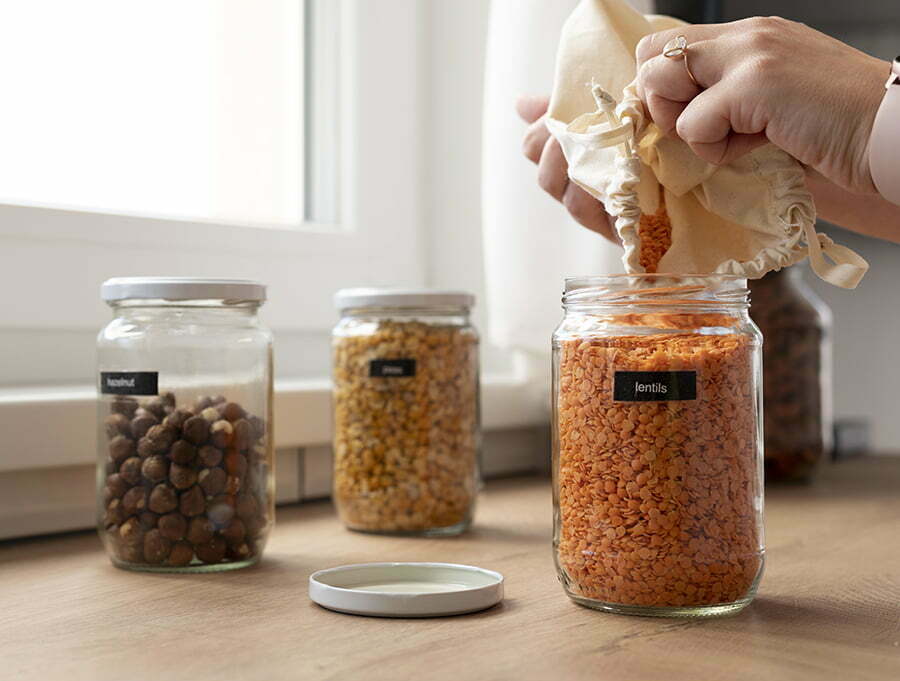
Mason jars are a popular and versatile option for food storage. They come in various sizes, making them perfect for storing everything from dry goods to liquids.
One advantage of using Mason jars is that they are made of glass, which means they won’t absorb odors or flavors like plastic containers can. The clear glass allows you to easily see what’s inside without having to open the container.
However, one disadvantage of using Mason jars is that they can be heavy and bulky compared to other options like plastic bags or silicone containers. Also, while Mason jar lids do provide an airtight seal when properly tightened, it may not be as secure as some other types of food storage containers with locking mechanisms.
Despite these drawbacks though many people still prefer mason jars because they’re affordable and widely available at most stores selling home decor items or kitchenware products. Plus their classic design adds a rustic touch wherever you use them!
Wooden Crates

Wooden crates are a rustic and charming option for food storage containers. They can be found at flea markets, antique stores, or even made from scratch with some basic woodworking skills.
The advantage of using wooden crates is that they add a natural element to your kitchen decor and can be easily customized with paint or stencils to match your style. However, it’s important to note that wooden crates may not provide an airtight seal like plastic containers do, which could lead to spoilage if not used properly.
They may require more maintenance than other options as they need occasional cleaning and oiling to prevent cracking or warping over time.
Repurposed Takeout Containers
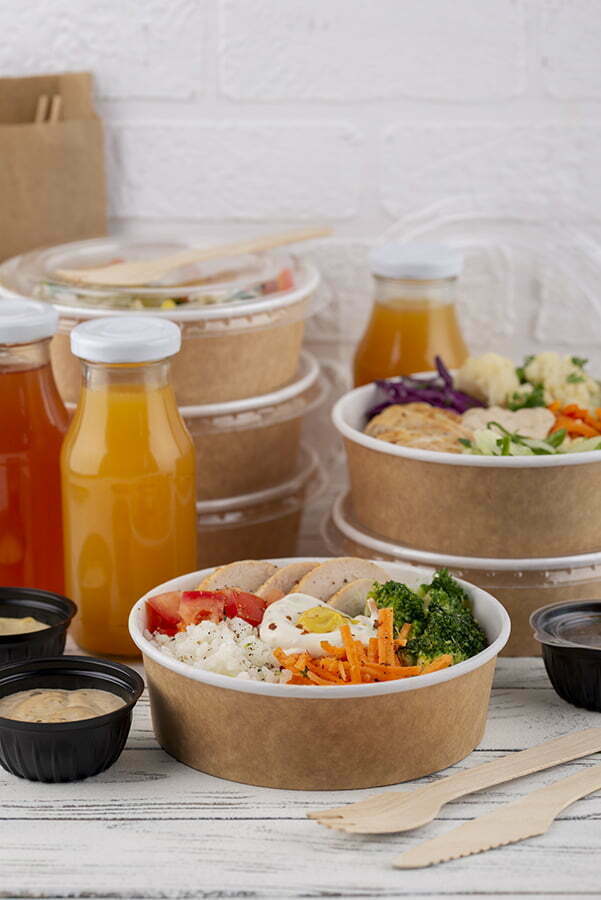
One of the easiest and most budget-friendly ways to store food is by repurposing takeout containers. These containers are often made from durable plastic or cardboard, making them perfect for storing leftovers or meal prepping.
Plus, they come in a variety of sizes and shapes, so you can find one that fits your needs.
Advantages:
- Free: You likely already have some lying around your house.
- Variety: Different types of takeout containers offer different sizes and shapes.
- Durable: Many are made from sturdy materials that can withstand multiple uses.
Disadvantages:
- Not air-tight: Most takeout containers do not have an air-tight seal which may cause food to spoil faster.
- Limited use: Some may only be used once before becoming too worn out for further use.
- Overall, repurposed takeout containers provide a quick solution for short-term storage needs without breaking the bank. Just make sure to properly clean them before using them again!
Vacuum-sealed Storage

Vacuum-sealed storage is a great option for those who want to keep their food fresh for longer periods of time. This method involves removing the air from the container, which helps prevent bacteria growth and oxidation.
Vacuum-sealed containers come in various sizes and shapes, making them versatile enough to store different types of food items such as fruits, vegetables, meats or leftovers.
One advantage of vacuum-sealed storage is that it can extend the shelf life of your food by up to five times longer than traditional methods. This type of container takes up less space in your fridge or pantry since there’s no excess air inside.
However, one disadvantage is that vacuum sealers can be expensive upfront compared to other alternatives on this list. Also if you don’t have a vacuum sealer machine at home then you will need an additional investment before using these containers.
Fabric Bowl Covers
Fabric bowl covers are a great alternative to plastic wrap or aluminum foil for storing food in bowls. They come in various sizes and designs, making them not only functional but also aesthetically pleasing.
Fabric bowl covers are reusable and washable, which makes them eco-friendly and cost-effective in the long run.
One of the advantages of fabric bowl covers is that they allow air circulation while keeping insects away from your food. However, they may not be as effective at preserving freshness compared to other storage options like glass containers with lids.
Another disadvantage is that some fabrics may stain easily or absorb odors from strong-smelling foods like garlic or onions. It’s important to choose high-quality materials that can withstand frequent use and washing.
Fabric bowl covers offer a stylish way to store leftovers without using disposable materials. They’re perfect for outdoor picnics or potlucks where you want your dishes covered but still visible through the colorful patterns on top!
Lunchboxes

Lunchboxes are compact, easy to carry around and often come with additional features like insulation to keep your food fresh.
Advantages of using a lunchbox include the ability to pack multiple items without worrying about them spilling or getting mixed up. They also offer more protection for delicate foods like fruits that could get squished in regular containers.
However, one disadvantage is that some models may not have enough space for larger meals or multiple servings of food. They may require extra cleaning due to their smaller size and various compartments.
Tin Cans
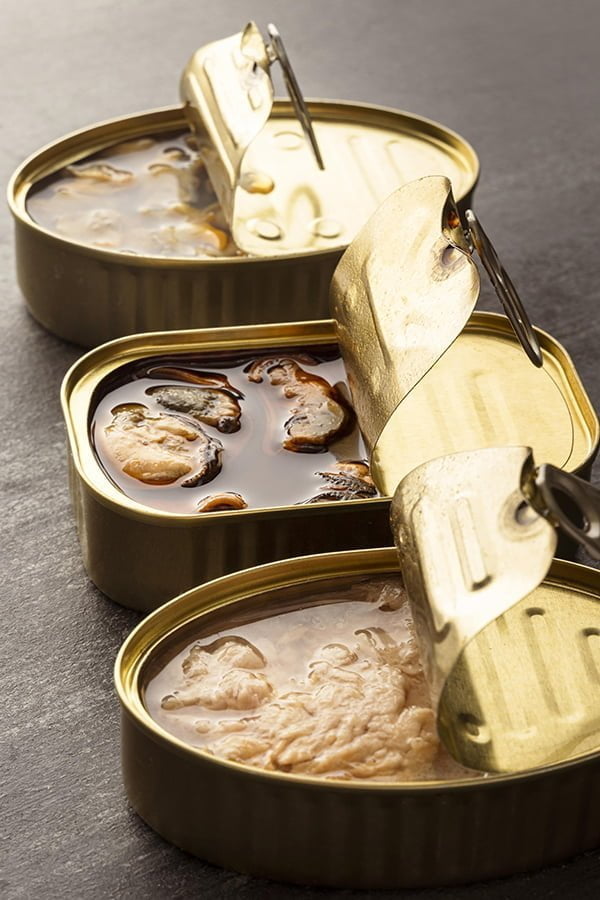
Tin cans are a classic food storage container alternative that has been used for decades. They come in various sizes and shapes, making them versatile for storing different types of food items.
One advantage of using tin cans is their durability; they can withstand high temperatures and resist rusting, which makes them ideal for long-term storage.
However, one disadvantage of tin cans is that they are not transparent, so it’s difficult to see what’s inside without opening the can. Some people may find the sharp edges on opened tins dangerous if not handled properly.
Despite these drawbacks, tin cans remain a popular choice due to their affordability and availability. They’re also recyclable after use which makes them an eco-friendly option as well!
Bento Boxes
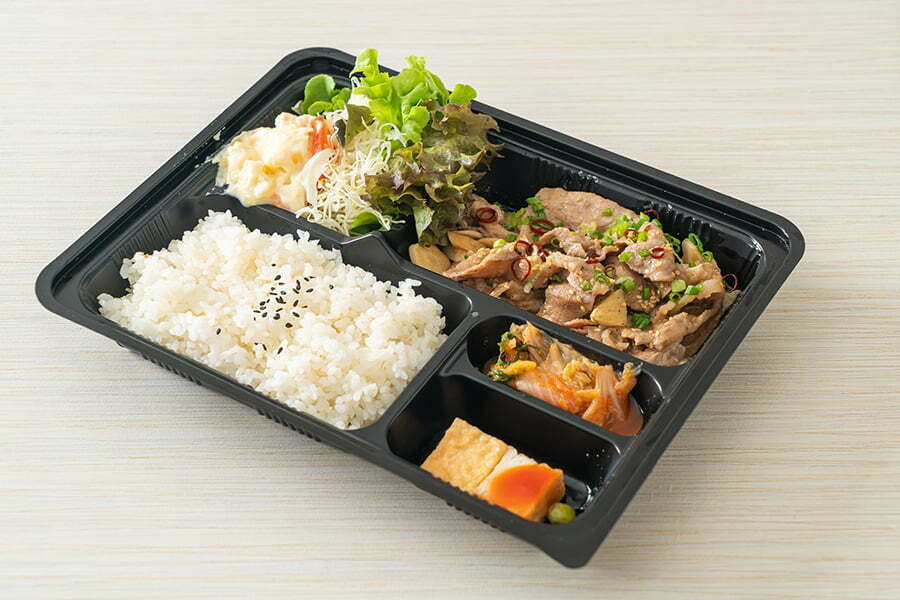
Bento boxes are a popular food storage container alternative that originated in Japan. These containers typically have multiple compartments, making them perfect for packing a variety of foods in one compact container.
Bento boxes come in various sizes and materials such as plastic, glass, or stainless steel.
Advantages of using bento boxes include their ability to keep different types of food separate and organized while also being easy to transport. They are also reusable and eco-friendly since they eliminate the need for disposable packaging like plastic bags or wraps.
However, some disadvantages may include limited space within each compartment which can make it difficult to pack larger items like sandwiches or salads. Some bento box designs may not be leak-proof which could result in spills during transportation.
Zip-top Pouches
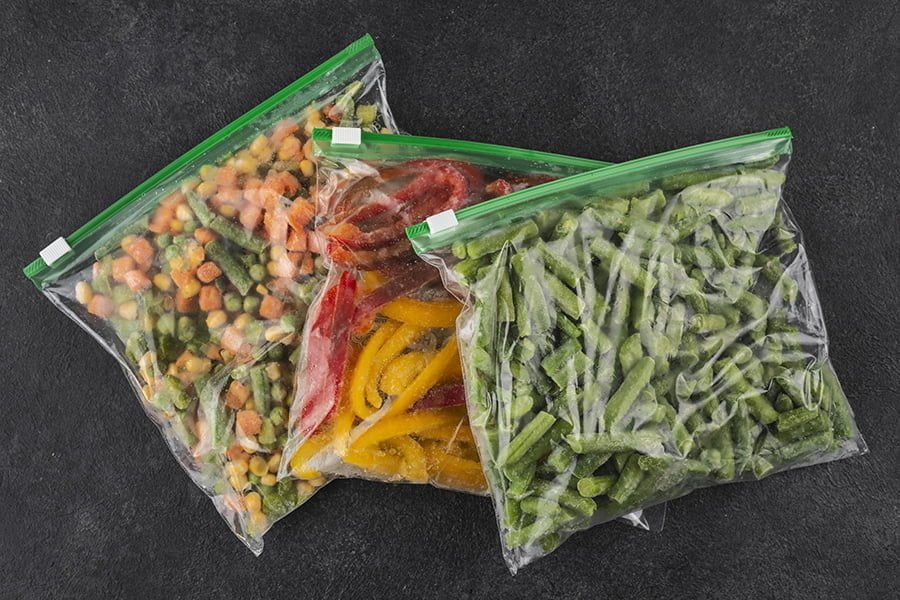
Zip-top pouches come in various sizes and can be used for storing snacks, sandwiches, fruits, and even liquids.
One of the advantages of using zip-top pouches is their flexibility; they can easily fit into any space in your fridge or pantry without taking up too much room. They are lightweight and easy to carry around when you’re on-the-go.
However, one disadvantage of using zip-top pouches is that they may not be as durable as other types of food storage containers such as glass or plastic containers. They may tear or puncture if not handled carefully which could lead to spills and leaks inside your bag or fridge.
Aluminum Foil
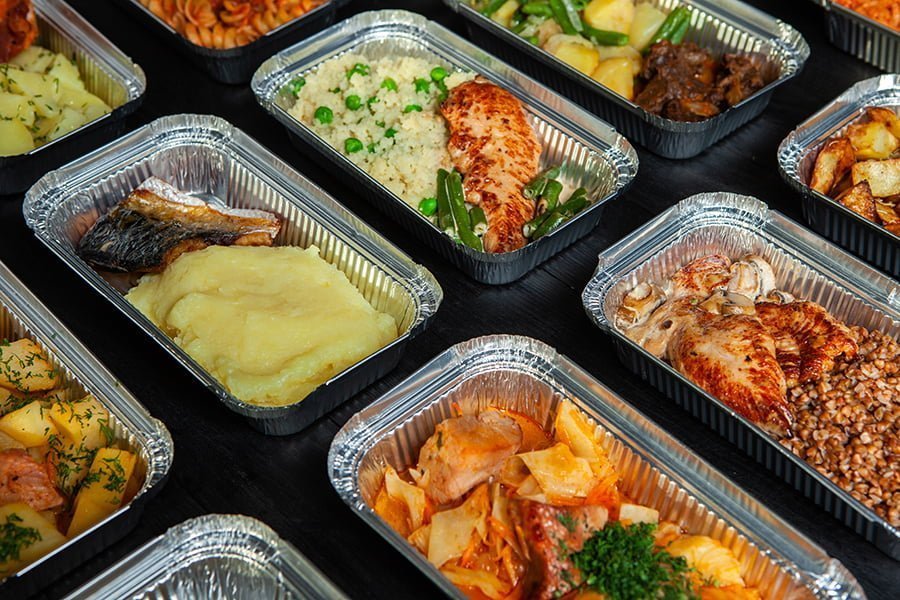
Aluminum foil is a common household item that can be used as an alternative food storage container. It is versatile and can be easily molded to fit any shape or size of food.
It is lightweight and easy to transport, making it ideal for packing lunches or taking snacks on the go.
One advantage of using aluminum foil as a food storage container alternative is its ability to keep foods fresh for longer periods. The material acts as a barrier against air and moisture, preventing spoilage and extending the shelf life of perishable items like fruits, vegetables, meats, and cheeses.
However, there are also some disadvantages associated with using aluminum foil for storing food. For instance:
- Aluminum foil may react with acidic foods such as tomatoes or citrus fruits causing discoloration.
- It cannot be reused indefinitely since it tears easily when exposed to sharp objects.
- There are concerns about potential health risks associated with prolonged exposure to high levels of aluminum in our diet.
If you’re looking for an affordable option that’s readily available in most households then aluminium could work well!
Plastic Wrap
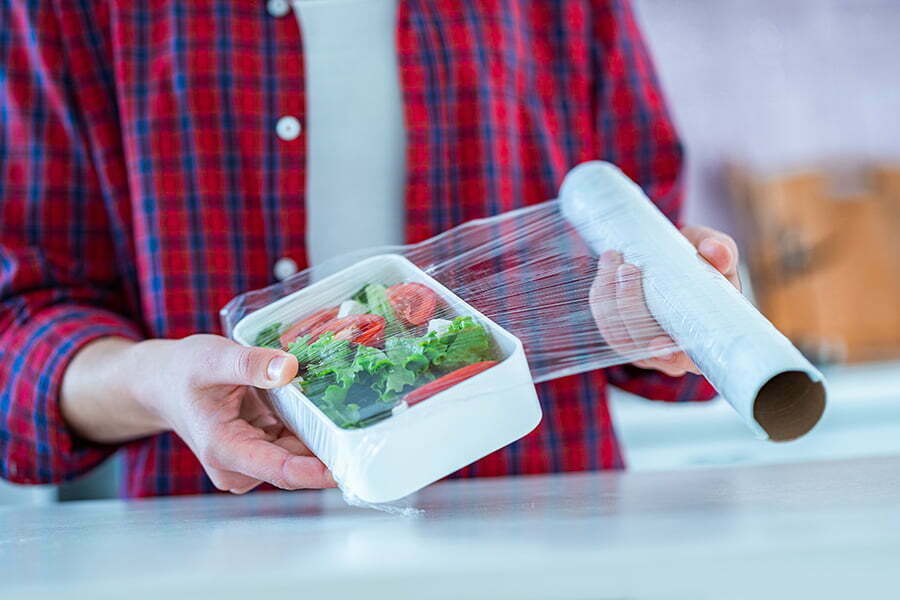
It’s cheap, easy to use and readily available in most grocery stores.
However, there are some disadvantages to using plastic wrap as a food storage container alternative.
Advantages:
- Plastic wrap is very affordable and can be found at almost any store.
- It’s easy to use and doesn’t require any special skills or tools.
- Plastic wrap is great for wrapping leftovers or covering bowls of food that need refrigeration.
Disadvantages:
- Plastic wraps are not reusable, generating more waste than other alternatives.
- They don’t provide an air-tight seal which can lead to spoilage of the stored foods over time
- Some studies suggest that chemicals from the plastic may leach into your food when heated in microwave ovens
While a convenient and inexpensive option for short-term storage needs like wrapping sandwiches or covering plates with leftovers before putting them away in the fridge; it might not be suitable if you’re looking for long-term solutions due its environmental impact.
Recap




